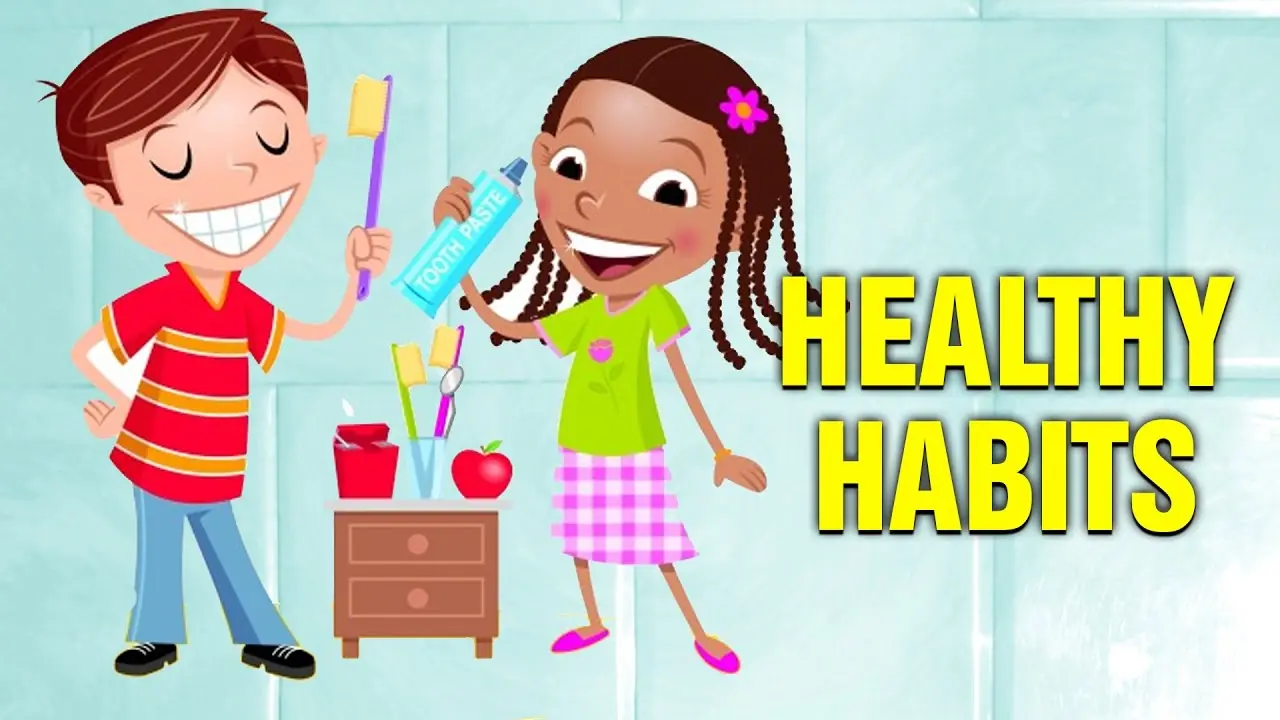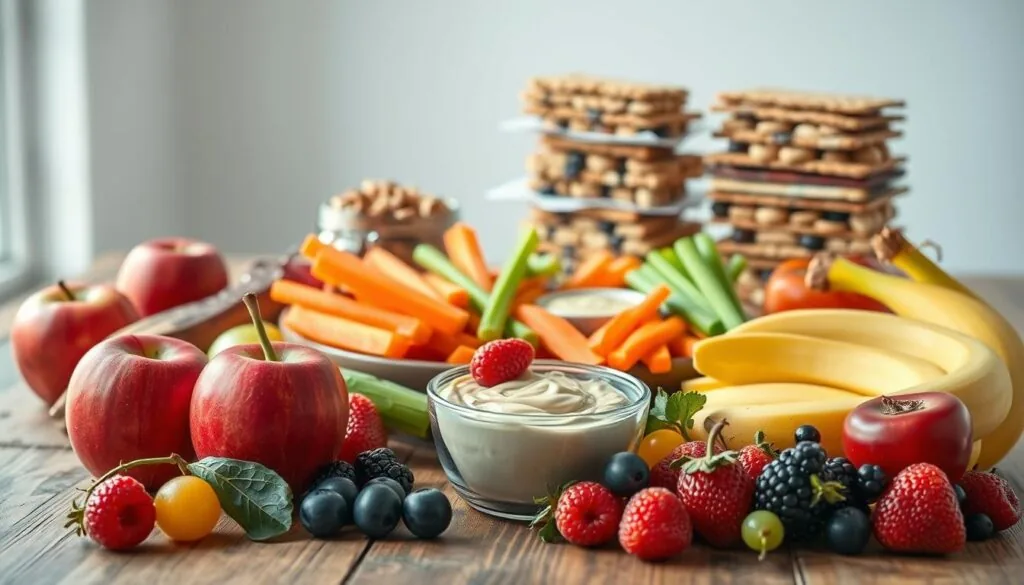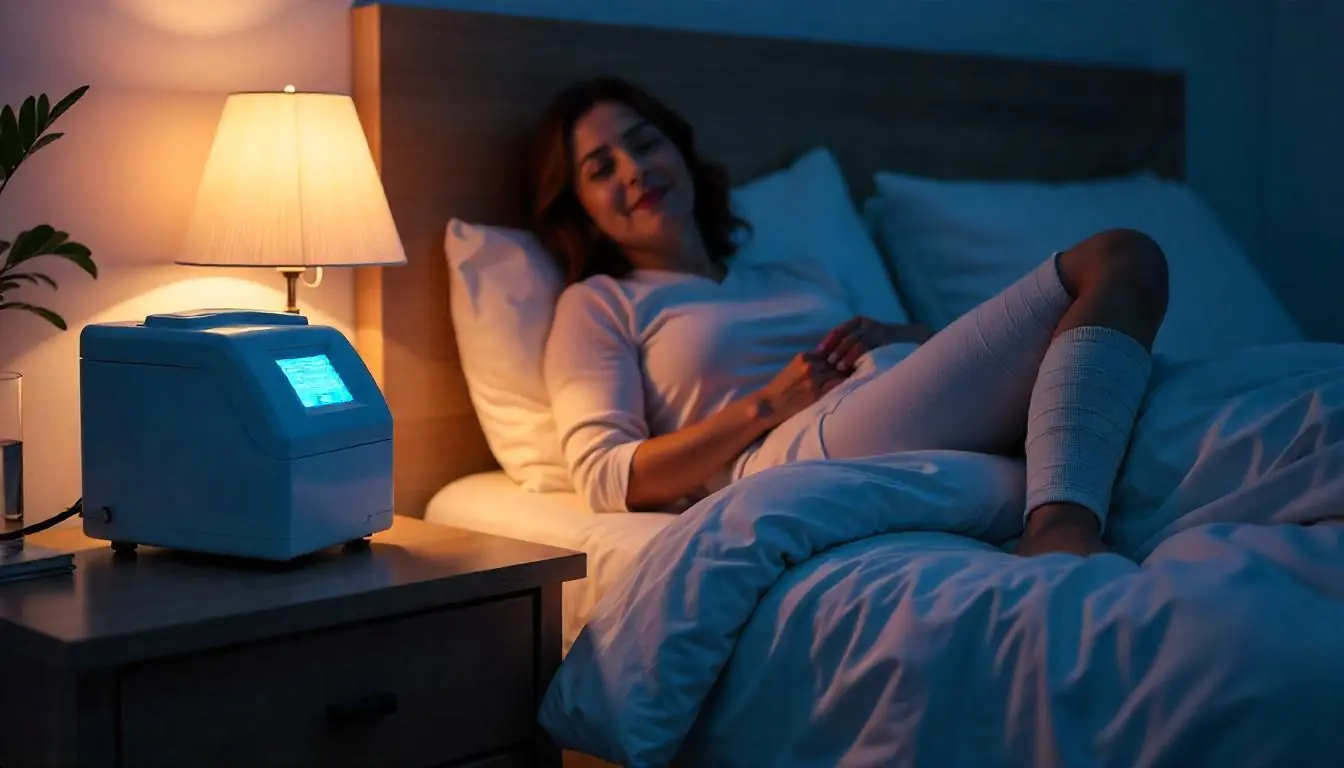Let’s be honest… trying to teach healthy habits to preschoolers can feel like juggling jelly. They’re curious, wiggly, wildly expressive — and frankly, not too interested in your chart about vitamins or the importance of brushing their teeth. But give them some paint, a pair of googly eyes, and permission to get messy? Suddenly, you’ve got their attention.
This is where art comes in. It’s not just about pretty pictures or staying inside the lines. Art helps preschoolers make sense of the world and develop a receptive mindset. It connects big ideas like personal hygiene, physical health, or healthy food to tiny hands and even tinier attention spans. With just a few craft materials and a little structure (or maybe not even that), you can build daily habits in a way that actually sticks.
Healthy Habits Art Activities for Preschoolers – Our 10 Best Picks
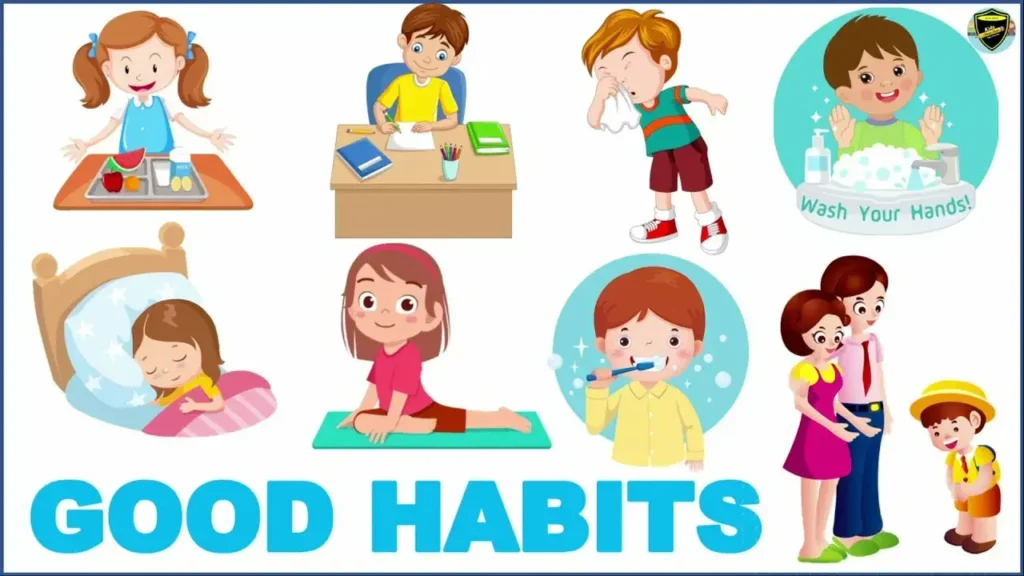
So what can you expect here? Not just ideas, but lived-through, realistic ones. These Healthy Habits Art Activities for Preschoolers aren’t perfect. They might get glitter everywhere. Some might flop. But the goal is simple — to help kids feel what healthy means… one finger-painted fruit or soap bubble print at a time.
Let’s get into it.
1. Hygiene Helpers: Art for Clean Hands and Faces
There’s something funny about kids and dirt — they’re magnetized to it. Cleanliness, on the other hand, feels like an uphill battle. But when you wrap it up in paint, stories, and silly characters? They start to get it.
• Finger Painting Hand-Washing Posters
Start with white paper, a few bold paint colors, and their own tiny hands. Help them make prints, then turn each one into a “step” of hand-washing — wet hands, soap up, scrub, rinse, dry. Label with simple words or emojis. Honestly, it doesn’t have to be pretty… it just needs to feel fun and theirs.
• Germ Monsters Collage
Cut up recycled paper, use googly eyes and glitter — and let kids create their own “germ monsters.” Talk about how these invisible creatures live on dirty hands and can make us sick. The sillier the monsters, the better. It’s weirdly effective.
• Soap vs. Dirt: Watercolor Storytelling
Use watercolor paper and split it in half. On one side, let them paint with “clean” colors — blues, greens, yellows. On the other, they mix browns and blacks to show dirt. Then tell a short story about a kid who washed their hands and one who didn’t. Maybe throw in a soap superhero.
2. Snack Smart: Creative Nutrition Collages
Food crafts are the real crowd-pleasers. Bonus if they’re about healthy eating habits… but disguised as colorful chaos.
• Building a Balanced Plate
Grab old magazines or grocery ads, safety scissors, and a big paper plate drawing. Have kids cut out and glue pictures of fruits, veggies, grains, and proteins to create their own healthy meal. Sure, some might glue a popsicle on top of spinach — that’s okay. It sparks conversation.
• Fruit Stamping Madness
Slice apples, bananas, pineapple, and oranges in half. Dip them in paint and stamp onto paper. The result? Bright prints that can be turned into fruit faces or food group charts. Pro tip: Banana prints don’t always work as expected… but that’s part of the fun.
• My Healthy Food Pyramid Craft
Using colored paper, help them create layers of the classic food pyramid (or a plate version). Stickers or pictures of nutritious foods can go on each level. Let them add a section for “sometimes” foods — it keeps things real for picky eaters.
3. Move Your Body: Art That Encourages Physical Activity
You can’t expect preschoolers to sit still for long. So… don’t. Let the activity include movement. In fact, make movement the activity.
• Draw Your Dance
Play music and let them move however they want. Then pause, hand them crayons, and ask them to draw what that dance felt like. There’s no wrong answer — just whatever colors and shapes come to mind.
• Stretchy Stick Figures
With pipe cleaners, kids can twist and shape “mini-me” figures in yoga poses or silly stretches. It becomes a weirdly adorable demonstration of body awareness.
• Fitness Path Mural
Lay out butcher paper across the floor. Each child draws a part of a daily routine — waking up, brushing teeth, jumping jacks, snack time, bedtime. Piece it all together to show a full day of healthy choices.
4. Hydration Station: Teaching Water Intake Through Crafts
Water doesn’t always excite preschoolers. It’s not sweet or fizzy or colorful. But through art? You can make it feel essential, even magical.
• “Water Is Life” Drop Painting
Using pipettes or straws, have them drop water-diluted paint onto paper and watch it spread. Talk about how water helps our bodies do the same — stretch, grow, move. It gets a little science-y, but they’ll mostly just enjoy the mess.
• Decorate Your Water Bottle Day
Let them personalize a reusable water bottle with stickers, non-toxic paint, or washable markers. Suddenly, they’re proud to drink from it.
• Thirsty Plant vs. Hydrated Plant
Draw or paint two plants — one droopy, one perky. Use storytelling to explain why one looks sad and the other is thriving. You could even use real plants in the classroom and have kids track how often they water them.
5. Sleep Routine Creations: Bedtime Rituals Through Art
Most preschoolers resist bedtime like it’s a punishment. But with a little visual help, they start to get the appeal.
• Bedtime Clock Craft
Use a paper plate to build a bedtime clock. Let them draw symbols — a book, a toothbrush, a blanket — for each step. It’s both cute and helpful when you’re trying to cut back on nightly tantrums.
• Dream Catcher Craft
String, paper plates, feathers, and beads… you’ve got a calming, creative activity that opens up gentle conversation about sleep. Plus, they love hanging it above their beds.
• Emotions After Sleep Painting
Paint two faces — one after a good night’s sleep, one after a restless one. Then chat about what sleep does for their energy, mood, and ability to play without crying every 15 minutes.
6. Emotional Wellness: Drawing Out Feelings
Let’s be real. Preschoolers feel everything all the time — they just don’t always have the words. Art can help.
• Emoji Plate Art
Draw or glue different emotions onto paper plates. Add yarn hair, googly eyes, or glitter tears. It’s an expressive way to open conversations about how they feel.
• Paint-By-Feelings
Assign colors to emotions — red for mad, blue for sad, yellow for happy — and let them “paint their day.” There’s no expected outcome. Just reflection and management techniques.
• Friendship Bracelets
Thread beads or pasta onto string. Each color could represent a kind feeling — kindness, sharing, listening. It’s tactile, personal, and something they can gift to a friend.
7. Dental Health Days: Smile-Driven Activities
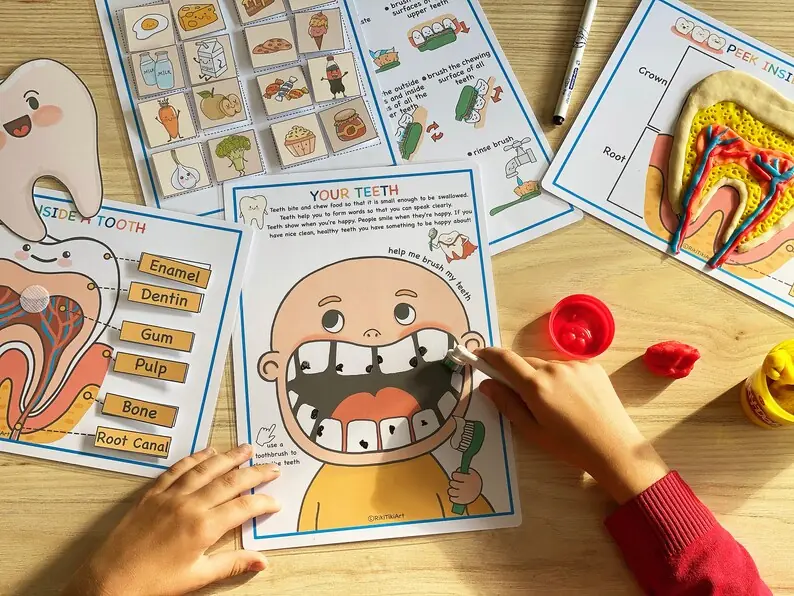
Dentist visits can feel scary. So can brushing. Art helps make it all feel a bit more friendly… even kind of funny.
• Happy Tooth vs. Sad Tooth Coloring
Give them two giant tooth outlines. One gets sparkles and white crayon polish, the other gets cavities drawn on in brown and black. Discuss what foods hurt or help our teeth.
• Build-A-Mouth With Felt
Use felt pieces to build a smiling mouth — teeth, tongue, toothbrush, even food items. Then walk through brushing motions together.
• Sugar Bug Masks and Brushing Chart
Let kids make silly “sugar bug” masks — the kind that love candy and hate brushing. It’s over-the-top and goofy, but it sticks with them.
8. Personal Hygiene: Fun with Grooming Habits
You’d think something self-care like combing hair wouldn’t be so controversial. But here we are.
• My Hair, My Care Portraits
Kids draw self-portraits and decorate their hair with yarn or paper. Add tiny accessories — bows, clips, hats. Then talk about daily hygiene, whatever that means for them.
• “Get Ready for School” Routine Collage
Cut and paste pictures or draw steps — brushing, dressing, shoes on. It’s both art and visual memory support for those rushed mornings.
• Soap and Bubble Painting
Mix dish soap, water, and paint… blow bubbles into it with a straw (yes, there will be giggles). Stamp onto paper to create bubbly prints. Talk about how bubbles help lift dirt off our skin.
9. Screen Time Awareness: Visual Limits with Art
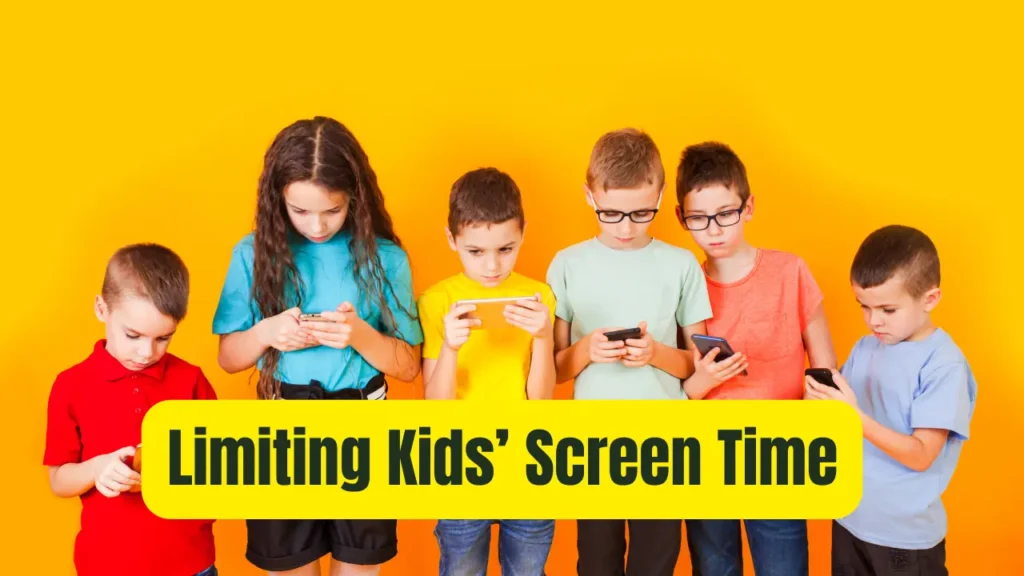
Screens are a part of life now. So instead of demonizing them, use art to set boundaries.
• TV vs. Playtime Pie Charts
Kids use stickers or crayons to make a pie chart of how they spend their day. You might be surprised… and so might they. It helps them visualize balance.
• Screen-Free Day Drawings
Have them draw all the fun things they can do without a screen. Hang them on a “screen-free idea” wall to revisit during the week.
• Time Tokens Craft
Create little coupons or tokens that kids can “spend” on screen time. It turns the concept into a hands-on game… and gives you a better sense of how they value it.
10. Safety First: Creating Awareness Through Art
Preschoolers don’t fully get danger. But they do understand stories, colors, and characters.
• Helmet and Seatbelt Coloring
Print pictures of kids riding bikes or sitting in cars. Let them color, then add little cut-out helmets or seatbelts. Talk about why those things matter.
• Stranger Danger Puppets
Using socks or paper bags, create friendly and “unfriendly” characters. Use them for quick role play during circle time — nothing too scary, just memorable.
• Red Light, Green Light Collage
Use red, green, and yellow paper to make traffic signals. Paste in cars, bikes, or walking feet. It’s basic… but connects physical safety with art they made themselves.
Conclusion
It’s easy to overlook how much preschoolers absorb through their fingers, eyes, and imagination. Art isn’t just a filler activity — it’s a way to root important habits into something they can see, feel, even take home.
Whether it’s a picture of a smiling apple or a glitter-covered germ monster, these Healthy Habits Art Activities for Preschoolers stick with them. They remind kids — and honestly, maybe remind us too — that wellness doesn’t have to be clinical or complicated. It can be loud, messy, and made of macaroni.
So keep painting those good habits… and maybe don’t worry too much if the glue ends up on the ceiling.
Frequently Asked Questions
Q1: At what age can children start these activities?
Most of these are perfect for ages 3 to 5, but younger toddlers can join in with a little extra help.
Q2: What materials are safe and best for preschoolers’ art?
Stick to non-toxic paint, washable glue, safety scissors, and recycled or soft materials. If it’s labeled “kid-safe” or “preschool-friendly,” you’re good.
Q3: How often should I repeat these healthy habit lessons?
You can revisit each topic monthly or seasonally — whatever feels right. Repetition builds memory, but it’s okay to space them out.
Q4: Can these activities be adapted for group or home settings?
Absolutely. Many of these work just as well around the kitchen table as they do in a classroom or daycare circle.
Q5: How do I measure if a child is understanding the healthy habit?
Watch their play, listen to how they describe their artwork, and look for small changes — like washing hands without being asked. It’s not instant, but you’ll see the signs.
Q6: What if a child isn’t interested in doing the activity?
That’s normal. Offer options, let them observe, and don’t force it. Sometimes just watching others is enough to spark curiosity later.
Q7: Where can I find printable activities or templates for these crafts?
There are lots online — Pinterest, education blogs, even some public health websites. Just search the activity name and “printable.”
Q8: How do I talk to preschoolers about topics like germs or sugar without scaring them?
Keep it light. Use silly characters (like glitter germs or sugar bugs) and focus on what helps us stay strong, rather than what hurts.
Q9: Do these activities connect to academic skills too?
Definitely. You’re reinforcing fine motor skills, sequencing, vocabulary, even basic science. It’s all part of the package.
Q10: How can I involve families in continuing these habits at home?
Send home a photo of their art, a short note, or even a simple version of the craft. Most parents appreciate a tangible starting point.

